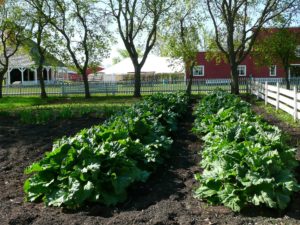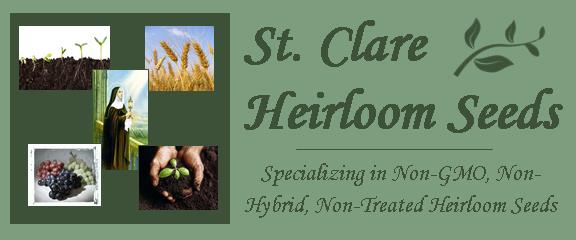
 Selecting a Garden Site for your
Selecting a Garden Site for your
Open Pollinated / Heirloom Vegetables
A back yard or some other plot near your home in full sunlight is the most convenient Open Pollinated / Heirloom vegetable garden site. However, poor drainage, shallow soil, and shade from buildings or trees may mean your Open Pollinated / Heirloom vegetable garden must be located in an area farther from the house.
In planning your vegetable garden site, consider what and how much you will plant. It is better to have a small heirloom garden well maintained than a large one neglected and full of weeds. Diagram the garden rows on paper and note the length you wish to assign to each heirloom vegetable. Use a scale of a selected number of feet to an inch. Then you can decide how much seed and how many plants to buy. Heirloom and open pollinated seeds are a great choice because you can save the seeds from year to year and they will remain true to type.
Consider also the possibility of working your heirloom vegetables in plots in front of your shrubbery. Many heirloom vegetables are ornamental in appearance. Some heirloom vegetables can be grown in your flower beds; others can be grown entirely in containers.
The amount of sunlight your Open Pollinated / Heirloom garden site gets must also be considered. Leafy vegetables, for example, can be grown in partial shade but vegetables producing fruit must be grown in direct sunlight.
Usually, the Open Pollinated / Heirloom vegetable garden site should be surrounded by a fence sufficiently high and close-woven to keep out dogs, rabbits, and other animals. The damage done by stray animals during a season or two can equal the cost of a fence. A fence also can serve as a trellis for beans, peas, tomatoes, and other Open Pollinated / Heirloom crops that need support.
In most sections of the country, rodents of various kinds damage vegetable garden crops. In the East, moles and mice cause much injury. Moles burrow under the garden plants, causing the soil to dry out around the roots. Mice either work independently or follow the burrows made by moles, destroying newly planted garden seeds and young plants. In the West, ground squirrels and prairie dogs damage vegetable gardens. Most of these pests can be partially controlled with traps.
Fertile, deep, friable, well-drained soil is necessary for a successful heirloom vegetable garden site. The exact type of soil is not so important as that it be well drained, well supplied with organic matter, retentive of moisture, and reasonably free of stones. The kind of subsoil also is vitally important. Hard shale, rock ledges, gravel beds, very deep sand, or a hardpan under the surface soil is likely to make the development of high grade vegetable garden soil extremely difficult or impossible. On the other hand, infertile soil that has good physical properties can be made productive by using organic matter, lime, commercial fertilizer, and other soil improving materials.
Good drainage of the soil is essential. Soil drainage may often be improved by installing agricultural tile, digging ditches, and sometimes by plowing deep into the subsoil. The vegetable garden should be free of low places where water might stand after a heavy rain. Water from surrounding land should not drain into the Open Pollinated / Heirloom garden, and there should be no danger of flooding by overflow from nearby streams.
Good air drainage is necessary to lessen the danger of damage by frost. A vegetable garden on a slope that has free movement of air to lower levels is most likely to escape late-spring and early autumn frost damage.
A gentle slope of not more than 1½ percent facing in a southerly direction helps early garden crops get started. In sections that have strong winds, a windbreak of board fence, hedge, or trees on the windward side of the heirloom garden is recommended. Hedges and other living windbreaks should be far enough away from the heirloom garden to prevent shade or roots from interfering with the vegetable garden crops.
The vegetable garden site should get the direct rays of the sun all day if possible. Some crops can tolerate partial shade, but no amount of fertilizer, water, or care can replace needed sunshine. Even where trees do not shade garden crops, tree roots may penetrate far into the soil and rob crops of moisture and plant food.
Damage to vegetable garden crops by tree roots may be largely prevented by digging a trench l to 2 feet deep between the trees and the vegetable garden, cutting all the tree roots that cross the trench. Then put a barrier of waste sheet metal or heavy roofing paper along one wall of the trench and refill it. This usually prevents root damage for several years.

